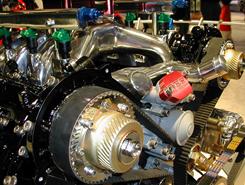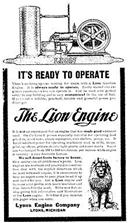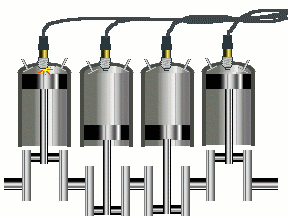Задания для использования сетевых переводчиков
Задание 1.
Программа «Promt-98».
В работе с лингвистическим материалом были определены следующие задачи:
1) Сравнение результата литературного перевода, выполненного компьютероми человеком;
2) Анализ часто встречающихся ошибок;
3) Выявление путей улучшения качества КП;
4) Определение причины несостоятельности компьютерной программы переводить так же качественно, как и человек;
5) Оценка качества КП от уровня разработанности и совершенства программ.
TASK 1. VARIANT 1.
I. TRANSLATE FROM ENGLISH INTO RUSSIAN:

Animated two stroke engine in operation
The internal combustion engine is an engine in which the combustion of a fuel (normally a fossil fuel) occurs with an oxidizer (usually air) in a combustion chamber. In an internal combustion engine the expansion of the high-temperature and -pressure gases produced by combustion applies direct force to some component of the engine, such as pistons, turbine blades, or a nozzle. This force moves the component over a distance, generating useful mechanical energy.[1][2][3][4]
 The term internal combustion engine usually refers to an engine in which combustion is intermittent, such as the more familiar four-stroke and two-stroke piston engines, along with variants, such as the Wankel rotary engine. A second class of internal combustion engines use continuous combustion: gas turbines, jet engines and most rocket engines, each of which are internal combustion engines on the same principle as previously described.[1][2][3][4]
The term internal combustion engine usually refers to an engine in which combustion is intermittent, such as the more familiar four-stroke and two-stroke piston engines, along with variants, such as the Wankel rotary engine. A second class of internal combustion engines use continuous combustion: gas turbines, jet engines and most rocket engines, each of which are internal combustion engines on the same principle as previously described.[1][2][3][4]
The internal combustion engine (or ICE) is quite different from external combustion engines, such as steam or Stirling engines, in which the energy is delivered to a working fluid not consisting of, mixed with, or contaminated by combustion products. Working fluids can be air, hot water, pressurized water or even liquid sodium, heated in some kind of boiler.
 A large number of different designs for ICEs have been developed and built, with a variety of different strengths and weaknesses. Powered by an energy-dense fuel (which is very frequently petrol, a liquid derived from fossil fuels), the ICE delivers an excellent power-to-weight ratio with few disadvantages. While there have been and still are many stationary applications, the real strength of internal combustion engines is in mobile applications and they dominate as a power supply for cars, aircraft, and boats, from the smallest to the largest. Only for hand-held power tools do they share part of the market with battery powered devices. A 1906 gasoline engine
A large number of different designs for ICEs have been developed and built, with a variety of different strengths and weaknesses. Powered by an energy-dense fuel (which is very frequently petrol, a liquid derived from fossil fuels), the ICE delivers an excellent power-to-weight ratio with few disadvantages. While there have been and still are many stationary applications, the real strength of internal combustion engines is in mobile applications and they dominate as a power supply for cars, aircraft, and boats, from the smallest to the largest. Only for hand-held power tools do they share part of the market with battery powered devices. A 1906 gasoline engine
Applications. Internal combustion engines are most commonly used for mobile propulsion in vehicles and portable machinery. In mobile equipment, nternal combustion is advantageous since it can provide high power-to-weight ratios together with excellent fuel energy density. Generally using fossil fuel (mainly petroleum), these engines have appeared in transport in almost all vehicles (automobiles, trucks, motorcycles, boats, and in a wide variety of aircraft and locomotives). Where very high power-to-weight ratios are required, internal combustion engines appear in the form of gas turbines. These applications include jet aircraft, helicopters, large ships and electric generators.
Classification. At one time, the word, "Engine" (from Latin, via Old French, ingenium, "ability") meant any piece of machinery—a sense that persists in expressions such as siege engine. A "motor" (from Latin motor, "mover") is any machine that produces mechanical power. Traditionally, electric motors are not referred to as "Engines"; however, combustion engines are often referred to as "motors." (An electric engine refers to a locomotive operated by electricity.) Engines can be classified in many different ways: By the engine cycle used, the layout of the engine, source of energy, the use of the engine, or by the cooling system employed.
II. TRANSLATE FROM RUSSIAN INTO ENGLISH:
Дви́гатель вну́треннего сгора́ния (сокращённо ДВС) — это тип двигателя, тепловой машины, в которой химическая энергия топлива (обычно применяется жидкое или газообразное углеводородное топливо), сгорающего в рабочей зоне, преобразуется в механическую работу.
 Двигатель внутреннего сгорания - это устройство в котором химическая энергия топлива превращается в полезную механическую работу.
Двигатель внутреннего сгорания - это устройство в котором химическая энергия топлива превращается в полезную механическую работу.
Несмотря на то, что ДВС относятся к относительно несовершенному типу тепловых машин (громоздкость, сильный шум, токсичные выбросы и необходимость системы их отвода, относительно небольшой ресурс, необходимость охлаждения и смазки, высокая сложность в проектировании, изготовлении и обслуживании, сложная система зажигания, большое количество изнашиваемых частей, высокое потребление горючего и т.д.), благодаря своей автономности (используемое топливо содержит гораздо больше энергии, чем лучшие электрические аккумуляторы), ДВС очень широко распространены, — например, на транспорте.
